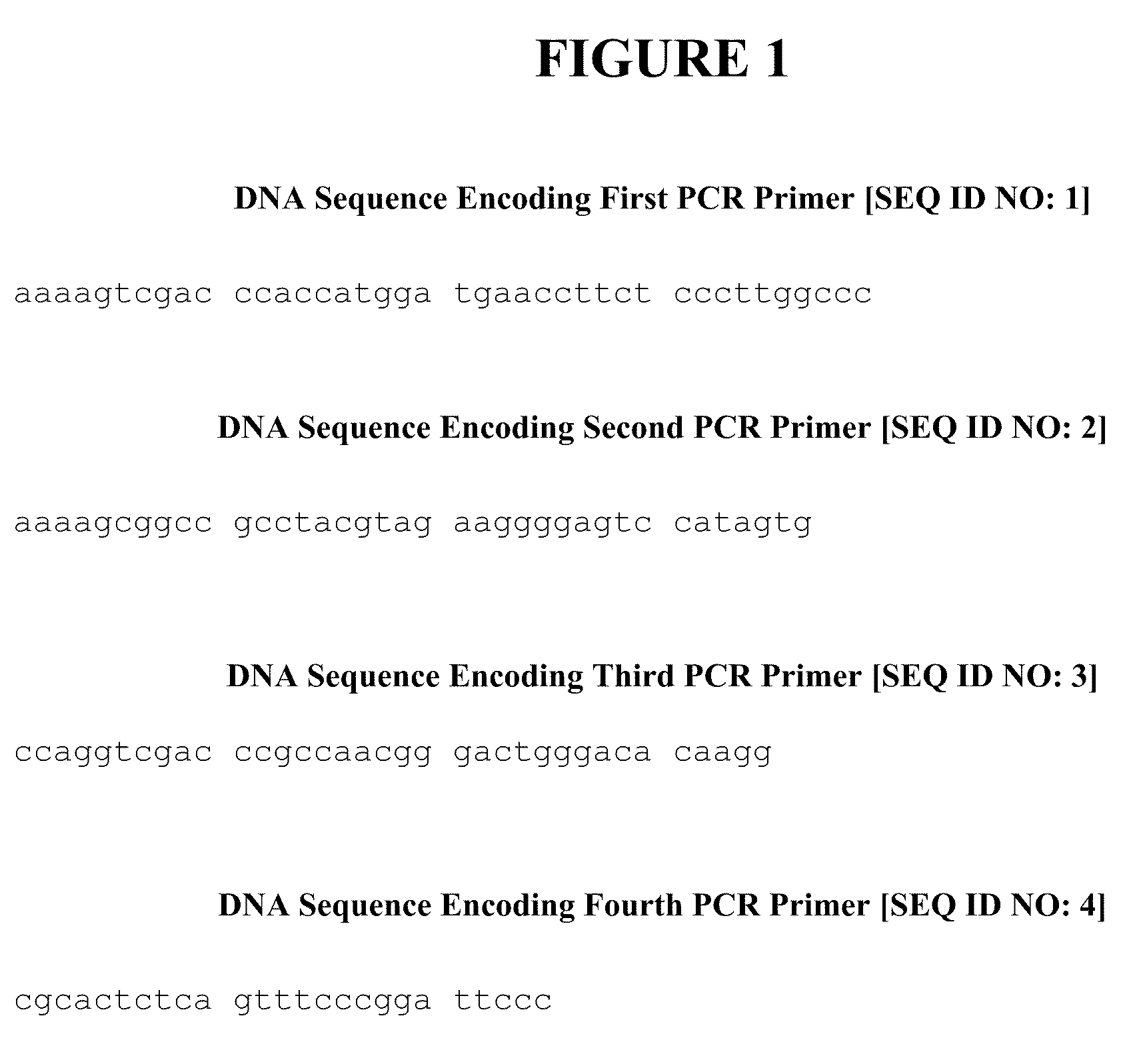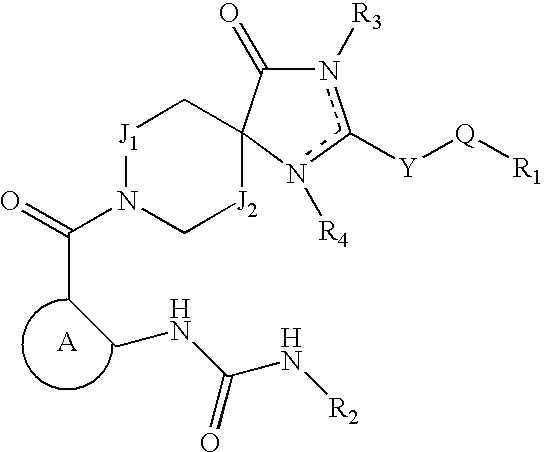Acetyl CoA carboxylase inhibitors
a technology of acetyl coa and inhibitors, applied in the field of compounds, can solve the problems of increasing fat oxidation and limit de novo lipid synthesis, and achieve the effect of reducing the activity of acc1 and reducing the activity of acc2
- Summary
- Abstract
- Description
- Claims
- Application Information
AI Technical Summary
Benefits of technology
Problems solved by technology
Method used
Image
Examples
example 1
Preparation of 1-(3-(2-(aminomethyl)-4-oxo-1,3,8-triazaspiro[4.5]dec-1-enecarbonyl)benzo[b]thiophen-2-yl)-3-ethylurea (1)
[0706]
[0707]A solution 4-(benzyloxycarbonylamino)-1-(tert-butoxycarbonyl)piperidine-4-carboxylic acid (1A, 2.0 g, 1.0 equivalent) in DME (0.5 M) was treated with NMM (1.0 equivalent) and IBCF (1.0 equivalent) at −15° C. After 10 min, aqueous ammonia (1.5 equivalents) was added. The reaction mixture was stirred at room temperature for 1.5 hr. The reaction was complete as determined by LCMS analysis and then partitioned between ethyl acetate and water. The organics were subsequently washed with brine, then dried over Na2SO4, filter, and the volatiles removed under reduced pressure. The residue was purified by crystallization from diethyl ether to afford the tert-butyl 4-(benzyloxycarbonylamino)-4-carbamoylpiperidine-1-carboxylate (1B, 70%).
[0708]1B (1.0 equivalent) and a catalytic amount of acetic acid in MeOH (0.05M) was passed through H-cube hydrogenator equipped ...
example 2
Preparation of and N-((8-(2-(3-ethylureido)benzo[b]thiophene-3-carbonyl)-4-oxo-1,3,8-triazaspiro[4.5]dec-1-en-2-yl)methyl)acetamide (2)
[0714]
[0715]tert-Butyl 2-(aminomethyl)-4-oxo-1,3,8-triazaspiro[4.5]dec-1-ene-8-carboxylate (1E) in CH2Cl2 (150 mg, 0.05 M), prepared by the procedure of Example 1, was added Et3N and acetyl chloride at −45° C. The reaction was complete after 20 minutes at −30° C. as determined by LCMS analysis, and then partitioned between ethyl acetate and water. The organics were subsequently washed with NaHCO3 and brine, dried over Na2SO4, filtered and concentrated under reduced pressure. The residue was passed thorough a pad of silica to afford the tert-butyl 2-(acetamidomethyl)-4-oxo-1,3,8-triazaspiro[4.5]dec-1-ene-8-carboxylate (2A, 87%).
[0716]For deprotection, 2A (1.0 equivalent) was dissolved in CH2Cl2 at 0° C., and slowly treated with a 1.6:1 solution of CH2Cl2 / TFA (2:1 final ratio, 0.15 M). The reaction was completed in 30 minutes at 0° C. as determined by ...
example 3
Preparation of 1-ethyl-3-(3-(2-(methylthiomethyl)-4-oxo-1,3,8-triazaspiro[4.5]dec-1-enecarbonyl)benzo[b]thiophen-2-yl)urea TFA salt (3)
[0719]
[0720]tert-Butyl 2-(chloromethyl)-4-oxo-1,3,8-triazaspiro[4.5]dec-1-ene-8-carboxylate (1D, 500 mg, 1.0 equivalent) prepared by the procedure of Example 1 and a sodium methanethiolate (1.5 equivalents) in DMF (0.17M) were heated to 80° C. for 1 hr. After the reaction was complete based on LCMS analysis, the crude product was purified by preparatory LCMS to provide the N-protected spiroimidazolone which (1.0 equivalent) was dissolved in CH2Cl2 at 0° C., and was slowly treated with a 1.6:1 solution of CH2Cl2 / TFA (2:1 final ratio, 0.15 M). The deprotection reaction was complete in 2 hrs at 0° C. as determined by LCMS analysis. The volatiles were removed under reduced pressure and yielded 2-(methylthiomethyl)-1,3,8-triazaspiro[4.5]dec-1-en-4-one (3A) as TFA salts and was used without further purification. ESI-MS: m / z 214.1.1 (M+H)+.
[0721]A solution ...
PUM
 Login to View More
Login to View More Abstract
Description
Claims
Application Information
 Login to View More
Login to View More - R&D
- Intellectual Property
- Life Sciences
- Materials
- Tech Scout
- Unparalleled Data Quality
- Higher Quality Content
- 60% Fewer Hallucinations
Browse by: Latest US Patents, China's latest patents, Technical Efficacy Thesaurus, Application Domain, Technology Topic, Popular Technical Reports.
© 2025 PatSnap. All rights reserved.Legal|Privacy policy|Modern Slavery Act Transparency Statement|Sitemap|About US| Contact US: help@patsnap.com



